19 Jan How to visit Tirupati Balaji for Darshan and Sightseeing
From the long list of spiritual destinations in India, Tirupati Balaji sits rather at the top, especially for the ones living in South India. In fact, people from the northern part of the country take the pain for a 2-day train ride to reach Tirupati.
With the hope of Tirupati Balaji Darshan, a privilege of a lifetime hundreds of devotees lines outside the Tirupati temple, regardless of the time, season, or cost for the pilgrimage. In fact, the temple welcomes somewhere between 50,000 to 1,00,000 devotees each day.
I am assuming you are planning to take the journey or perhaps planning it for someone else. In any case here is all you need to know about visiting Tirupati.
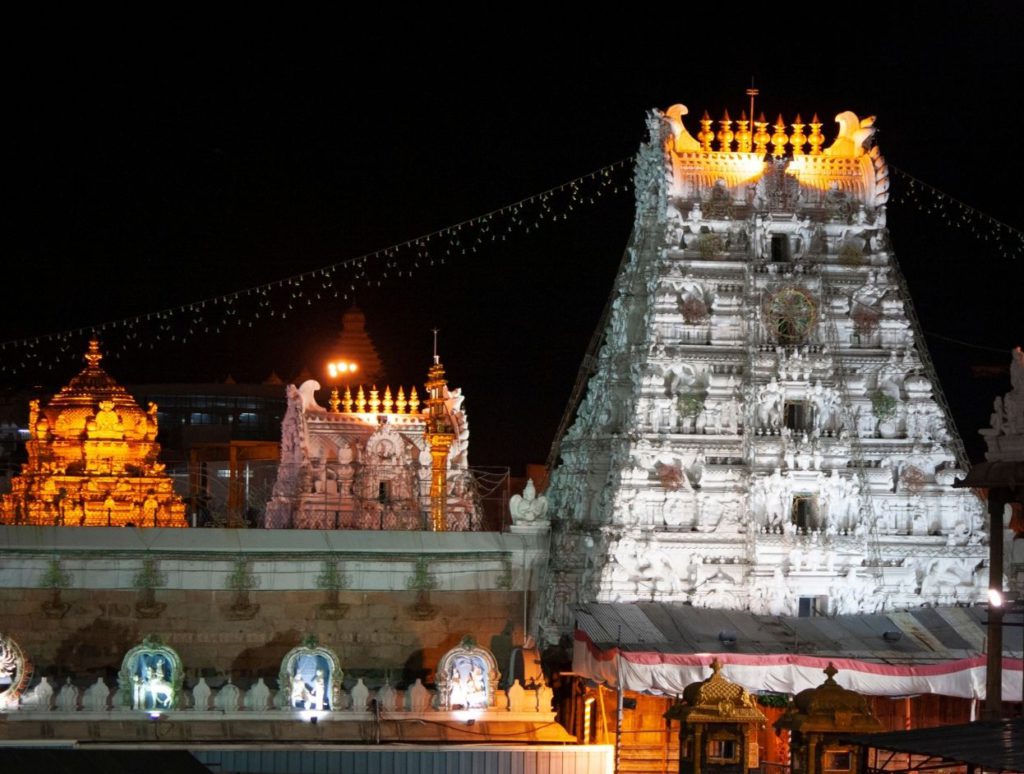
Why is Tirupati So Important?
Tirupati is the home to the Hindu deity of Govinda (or Vishnu) where both the deity and the city have found a place in several Puranas and Vedas. It is where people believe that Lord Venkateshwara took form as an idol.
The pilgrimage is considered a must at least once in the lifetime of all Vaishnavites (devotees of Lord Vishnu) of the world. In India, Tirupati is especially associated with prosperity. In fact, in recent years several celebrities and high-profile businessmen have made the trip with their families. They have contributed a large sum of gold and cash to the deity (more on this later).
So on the whole, people travel to Tirupati Balaji for two reasons – to make a wish and as gratitude when it comes to fruition.
Where is Tirupati Located?
The temple is located in the Chittoor district of Andhra Pradesh. It is not the city, but for Lord Venkaeshwar inside Tirumala Venkateshwar temple or rather Tirupati Balaji that people take on this journey located inside the city of Tirupati.
To be exact, the temple is located on the hill town of Tirumala. It is one of the seven hills of Saptadiri in Tirupati located 22 km from the town center.
How to Reach Tirupati
Flights to Tirupati
Tirupati Airport (TIR) is the closest airport to the town located just 13 km from the city center. It is 45 km from the temple in Tirumala. Regular flights run from all major cities like New Delhi, Mumbai, Bangalore, Chennai, Pune, Hyderabad, Goa, and a few more. No international flights run from here.
You can take a cab from the airport to anywhere in the city. The cost will range from ₹600 – 700 depending upon the cab and takes about 15 – 20 mins for the ride. Both prepaid cabs and Ola cabs are available from the airport. A cab from the airport directly to Tirumala (temple) will cost you ₹1,500 one way. If you wish you can also book a taxi ahead of time online on tirumalatirupaticabs.in or taxiintirupati.com.
Buses are also available from the airport. You can take a regular bus to Tirupati Bus station in the city that costs ₹45. Direct deluxe state bus runs straight to Tirumala at 8.30 am, 10 am, 3.30 pm, 4.30 pm, 7.30 pm, and 8.45 pm that costs ₹93 for the ticket. A super luxury bus also runs at 2.30 pm that charges ₹103 for the ticket. Just ask for the directions to the bus station at the airport. However, they probably will wait for a while to collect passengers. If you are in a hurry, better take a taxi.
Tirupati by Bus
Regular buses run several times a day from the nearest cities like Chennai and Bangalore. The travel time is 3.5 hours from Chennai and a little more than 5 hours from Bangalore. You can catch a bus directly at the state bus station or book ahead online. The prices of state buses are far cheaper than private ones but you may have to give up comfort.
If you are traveling from Andhra Pradesh or Tamil Nadu book your tickets on the Andhra Pradesh State Bus website apsrtconline.in. If you are travelling from Karnataka or Bangalore check out the schedule and book on ksrtc.in for state bus. If you are looking for a private bus from any other location, you can also head to redbus.in to book your tickets. Note that the boarding stops for private buses are different from the state bus stops buses. The stop is usually mentioned in the ticket.
Tirupati by Train
For travelers travelling from long distances, the train is the most affordable option. It is also the most fun option, especially if you are traveling in a group. Several trains run from all parts of the country to Tirupati. The railway station is located in the middle of Tirupati town.
You can check the availability of a train (station code is TPTY) on trainman.in and book a ticket on the official railway website irctc.co.in. The demand is usually high so you should book the tickets well ahead of time. If you cannot get a direct train to Tirupati, look at reaching Chennai and then switching to a local train or a bus to Tirupati.
The main temple and Tirumala is 22km from the railway station. You can get a cab or a local auto for the journey. Buses are far cheaper and charge around ₹100 to the main temple. You will find them right opposite the railway station. Free buses called ‘dharmaradham’ also run frequently from the railway station directly to Tirumala as well as Alpiri (foothills for those you want to climb via stairs). Check out the route details here.
Tirupati by Tour Packages
If you are looking for a package for the elderly or want to cover the Tirupati pilgrimage with more comfort, I will suggest taking a guided tour. They look after everything from pick up to drop at the last-mentioned railway station, local transportation, ticket, food, and accommodation.
Check out some package tour options from private companies like thrillophilia.com and padmavati travels. Irctc also runs several Bharat yatra routes across India connecting major pilgrimage destinations. You can check these tours at the official website.
How to go around in Tirupati
While most people come to Tirupati to visit Lord Venkateshwara, there are still a lot of other holy places and temples to visit in and around Tirupati. You may need to stay an extra day in Tirupati apart from the day you head for darshan.
Government tour packages
Andhra Pradesh Tourism Development Corporation (APTDC) runs tours to the popular temples in and around Tirupati. Here are the two types of services that you can avail.
Local Temple Tour: A tour leaves every hour between 7.00 am – 1.00 pm from Srinivasam Complex opposite to APSRTC Bus Station. The same tour is available from Vishnu Nivasam Complex opposite Tirupati Railway Station every other hour (4 trips) between 7.00 am to 1.00 pm. This tour covers the following temples:
1. Sri Padmavathi Ammavari Temple, Tiruchanoor
2. Sri Kalyana Vankateshwaa Swamyvari Temple, Srinivasa Mangapuram
3. Sri Agastheeswara Swamyvari Temple, Thondawada
4. Sri Kapileswraswamyvari Temple, Kapilatheertham, Tirupati
5. Sri Govindaraja Swamvyari Temple, Tirupati
The price for the tickets is ₹150 for AC and ₹100 for Non-AC for all Adults. No ticket is required for children below 10 years of age.
Nearby Temple Tour: Similar to the above service, a tour from the same starting points for some of the popular temples around the city for a duration of 8 hours. The tour leaves twice a day at 9 am and 1 pm from both points. The tour covers the following temples:
1. Sri Venugopalaswamyvari Temple, Karvetinagaram
2. Sri Kalyanavenkaeswaraswamyvari Temple, Narayanavaram
3. Sri Pallikondeswara Swamyvari Temple, Surutupalli
4. Sri Vedanarayanaswamyvari Temple, Nagalapuram
5. Sri Kariya Manikya Swamyvari Temple, Nagari
6. Sri Kasi Viseswara Swamyvari Temple, Bugga
7. Sri Prasanna Venkateswaraswamyvari Temple, Apppalayagunta
The price for the ticket is ₹350 for AC and ₹250 for Non-AC for adults.
Auto-rickshaw/Cabs
If you are hand-picking your itinerary and are planning to visit just a couple of more places along with the main temple, an auto-rickshaw is a good way to travel inside Tirupati. You can get one at any point. Negotiate a price before boarding the vehicle or you may be overcharged or taken by surprise.
Auto-rickshaws are also available on Ola (app) which will give you an idea of a fair price. You can always book a regular cab on Ola too.
Day cabs
If you are traveling in a group and looking for comfort it is best to hire a day cab. You can hand over your requirements or a custom itinerary to them or ask them for it. There are several cab services available inside the city. You can ask your hotel for a day cab or visit any local tour agency. A full day cab will start from ₹1,300 depending upon the type of car.
If you want to book one online you can check out local agencies like tirumalatirupaticabs.in or taxiintirupati.com or national services like savaari.com. You can also book a full-day rental using the Ola app.
Hotels in Tirupati
While you can stay in Tirupati town with a huge selection of hotels and make a day trip to the temple, you can also stay in Tirumala.
The temple authorities have several designated resthouses in Tirumala. They range from basic dormitories to well-equipped villas but all of them are shared. You can check out the list of the designated guesthouses online or gist of rooms and their prices and book them a month or 45 days ahead on the official online portal.
Once booked you need to head to the accommodation counter at Tirumala. You show them your receipt and they will allot you a room within 1 km after taking a security deposit. You also need to vacate your room on a strict timeline of 24 hours. Otherwise, they charge a heavy fine on the delay.
On the other hand, you can check out some of the following hotel options to live inside Tirupati city. A day’s room rent can range from as little as ₹50 near the railway station with basic but clean facilities. Luxurious hotels are also available if you are looking to stay comfortably.
Budget: Kvp Inn, P.M.R Guest Inn, GM Hotel
Mid-budget: Pai Viceroy, MG Hotel IRIS, Starlit Suites Tirupati
Luxury: Taj Tirupati, Fortune Select Grand Ridge, Hotel Marasa Sarovar Premiere
Visiting Tirupati Balaji or Lord Venkateshwara Temple
Legend of the Swayambhu
The temple is popular as a self-manifestation (commonly known as ‘swayambhu’ meaning no human created it) of Lord Vishnu himself sits in the form of a stone idol. People believe that the idol appeared in the age of Kali to guide his devotees towards salvation.
As per the legend, a powerful Sage named Bhrigu wanted to evaluate the strength of the most powerful deity of the time. After feeling dissatisfied with both Lord Shiva and Lord Brahma, he went on to kick Lord Vishnu on his chest. Goddess Laxmi residing on his chest felt insulted and left the celestial abode to come down to earth.
Lord Vishnu himself came looking after his consort and upon finding the occurrence took to an anthill and began meditating. Following his footsteps, Lord Shiva and Lord Brahma came in the form of a cow and a calf looking for them. The cow poured milk to him every day to continue his meditation. A king nearly killed the cow and the calf that enraged Lord Vishnu. After realizing his mistake, the king pleaded for mercy and offered his daughter for wedding in his next cycle of birth.
In time Vishnu reincarnated as a forest dweller called Srinivasa and met the King’s daughter called Padmavati. They decided to marry. Srinivasa borrowed money from Lord Kubera (the god of wealth) gave the king a huge dowry and an extravagant lavish marriage unseen before. Following this goddess Laxmi confronted Lord Vishnu and the clash between his consorts led him to turn himself to stone.
Lord Venkateshwara decided to remain on the hill and is still residing there till day. Padmavati and Laxmi sit on either side. His debt towards lord Kubera continues and the offerings from the devotees go towards paying it off.
Tirupati Balaji today
Keeping aside the legend, the initial temple construction goes back to 300 AD. The medieval kings of Pallavas, Cholas, and especially from the Vijayanagar Empire, the most powerful at the time fuelled its importance and prosperity with continuous visits.
The temple is built in the traditional Dravidian style of architecture. The main sanctum has the standing idol of Lord Venkateshwara with his consorts one both sides are known as Bhudevi and Sridevi. A large diamond shines on the idol’s crown famous as the most precious single ornament in the world.
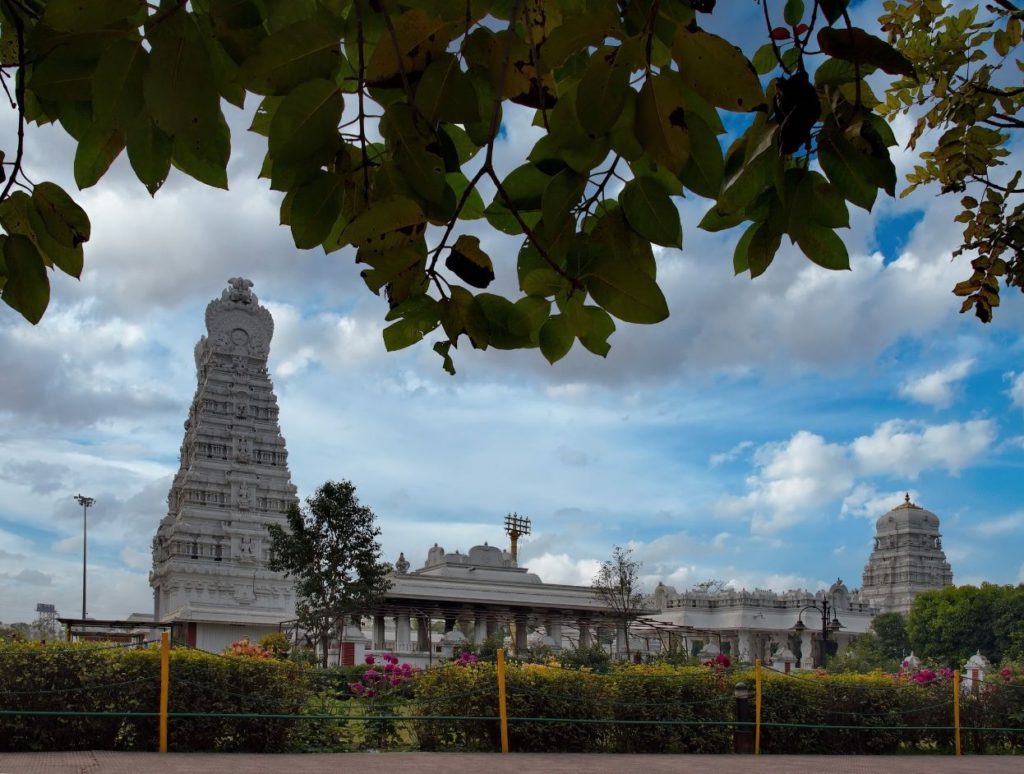
Buying the tickets
You can buy the tickets to the main temple on the spot or online (read below). You need to head over to the ticket station right opposite the Bus station (also near the railway station). The counter opens at 4 am in the morning and people stand in the queue since 3 am.
A certain number of free tickets are available every day. But other than that your waiting time at the temple will depend upon the cost of your ticket. Expect the maximum waiting time as below:
Free ticket: 10-12 hours
Ticket price ₹50: 6-8 hours
Sheeghra Darshan Ticket price ₹300: 3-4 hours
VIP Break Darshan Ticket price ₹500: 1-2 hours (Check out the official timings for VIP darshan)
You probably won’t find any information on the ₹500 ticket type, so ask around. If you can, cut your waiting time short. . Once you buy the ticket you will get a time slot for visiting. Reach the temple premises 2-3 hours before your designated time and visit other temples in the area.
You can always buy your ticket online. Head over to the official tirupati Balaji website but you need to register yourself first. Keep a copy of your e-ticket while visiting.
Reaching Tirupati Balaji by stairs and bus
You can take the free bus service in front of the railway station to reach the foothills (Alpiri). For pilgrims who want to climb all the way up, there are nice concrete footsteps for the journey. If you are taking the cab, just ask the driver to leave you near the foothills or at Alpiri Bus Station.
There is also a left luggage counter at the foothills that will transfer your luggage to Tirumala for free. You can collect it from the counter on the top. The path measures 11 km and can take up to 3.5 hours to climb to the top. Toilets, drinking water, and canteens are available on the way. Pregnant women, people with high blood pressure and heart issues are not advised to take this journey on foot.
If you are not looking to take the stairs, you can reach the Alpiri Bus stand at the foothills. Regular bus leaves for the top that costs ₹100 per person for the return journey, ₹55 for one way for adults, and ₹30 for a child.
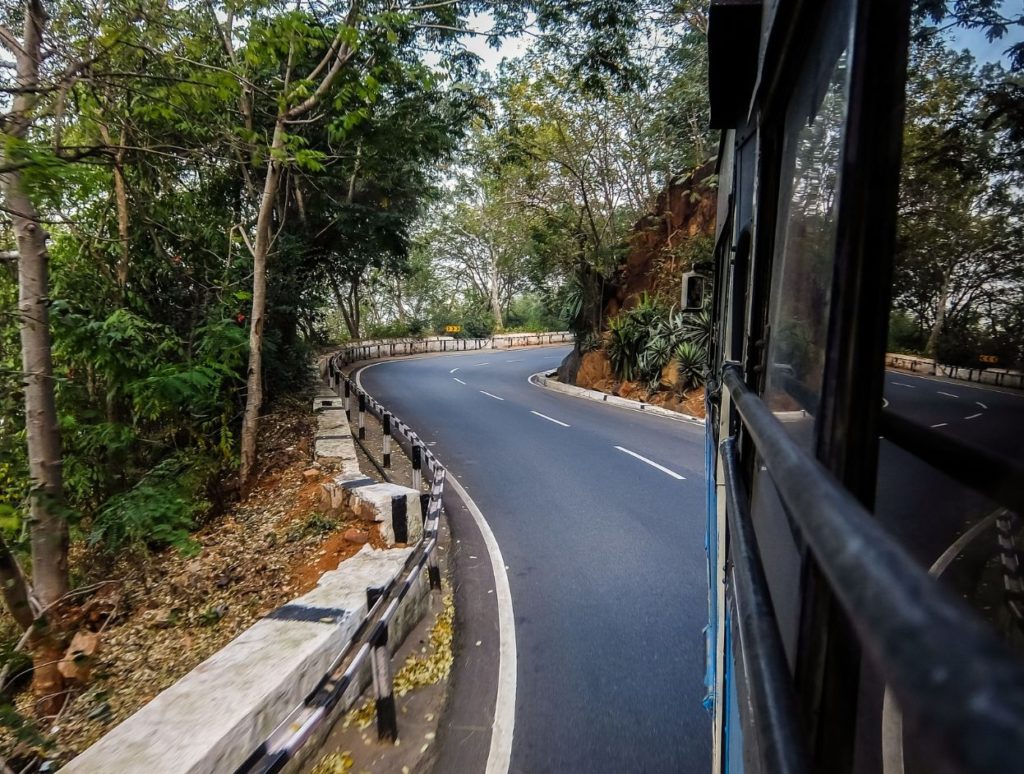
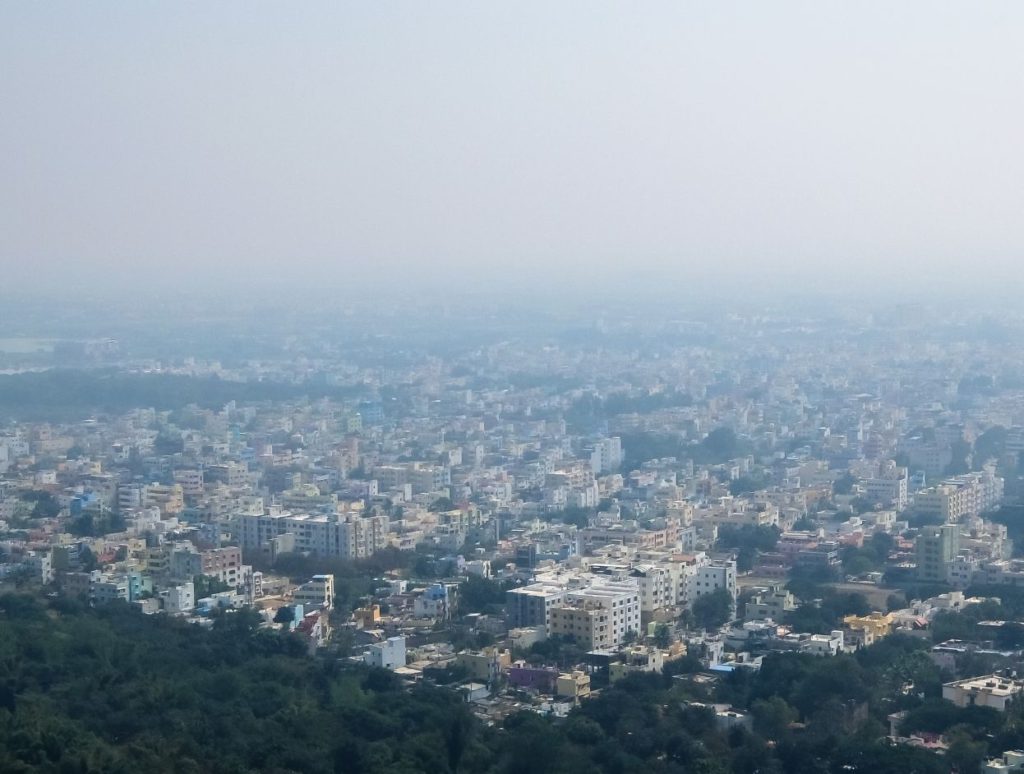
At Tirupati Balaji temple premises
Upon reaching and after resting, several devotees take a dip in Swami Pushkarni (a public bath). Next, visit Sri Bhu Varaha Swamy right next to Pushkarni. It is important to make a stop at this temple. People believe that your journey to Tirupati Balaji is incomplete if you haven’t visited Sri Bhu Varaha Swamy before you reach the main temple.
Once you are done you can head over to the canteen or any shops to have some food and proceed to join the queue to the darshan. The queue is long and depending upon your ticket you can expect yourself to wait. There is a separate line for parents with kids under 1 year of age and another one for the elderly.
All these merge after a while. There is no food available in the lines but you can take some with you. So you better fill yourself up and carry a water bottle too. Water and snacks can be expensive around the queue area. People with children should take extra care since the place may get overcrowded and it is easy to lose wandering kids. Don’t leave them unsupervised. Phones and other electronics are not allowed from here.
Tirupati Balaji Darshan
As you reach the main altar, the lights decrease and you will be left in comparative darkness. A 10-15 second window is your only chance to see Tirupati Balaji and you must focus your attention at this point or you may lose your chance in the rush and crowd. Don’t forget to make your wish or be grateful if yours have already been fulfilled.
The statue of Tirupati Balaji is jet black decorated with gorgeous jewelry. If you haven’t already heard about the enormous size of Balaji’s treasury, you can witness a small part of it here. The decorations, clothes, and jewelry keep changing with days and occasions. Both his escorts sit on either side in the same stone, decorated with lavish articles. The background sound of Sanskrit shlokas exaggerates a holy presence.
Once you are done with the darshan and you move out of the main altar you will receive prasadam of two laddus for every sheeghra darshan ticket (₹300). Every extra laddu is for an additional ₹25. Free meal thali is also available if you are hungry.
Make your way back the same way using the bus or cab services to the foothills. Or board one directly to the city if you are planning to visit other places in the town.
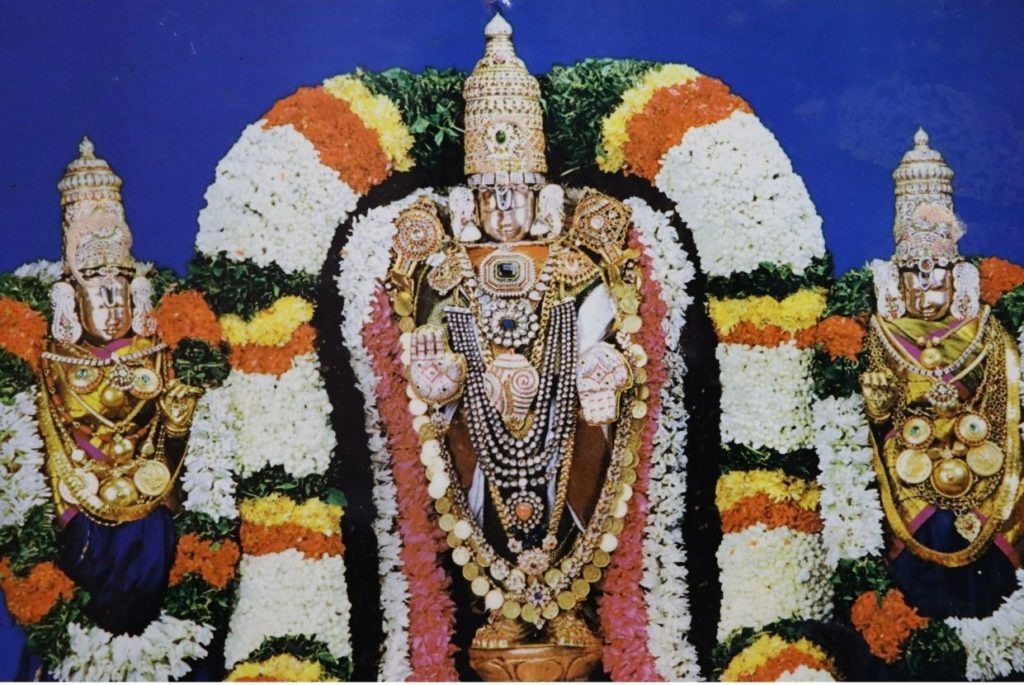
Places to Visit in Tirupati
1. Sri Govindarajaswami Temple
Another temple where deities make a stop is Sri Govindarajaswami Temple while visiting Tirupati Balaji. The idol of the deity is here since 1130 AD.
The temple is a Hindu Vaishnavite shrine built by Saint Ramanujacharya in the 12th century. The deity in the temple is Lord Govindaraja Swami, elder brother of Lord Venkateshwara. He was the one who borrowed money from Kubera for Lord Venkateshwara’s wedding with Padmavati. Hence he is the god you go for blessings to elevate and efficiently manage your wealth.
One of the biggest temples in the city, the beautiful traditional Dravidian architecture depicting scenes from Ramayana and Lord Krishna’s life attracts tourists who come to visit Lord Venkateshwara. There are several smaller shrines and a museum inside the complex too. You can also find the idols of Rukmini and Satyabhama here.
It is at a distance of 1km from Tirupati Railway Station & 22km from Tirumala Balaji temple. The entrance is free for everyone (₹5 for special darshan, ₹20 for quick darshan). The temple is open from 5:00 am – 12:30 pm, 1:15 am to 4:45 pm, and 6:00 pm – 9:30 pm.
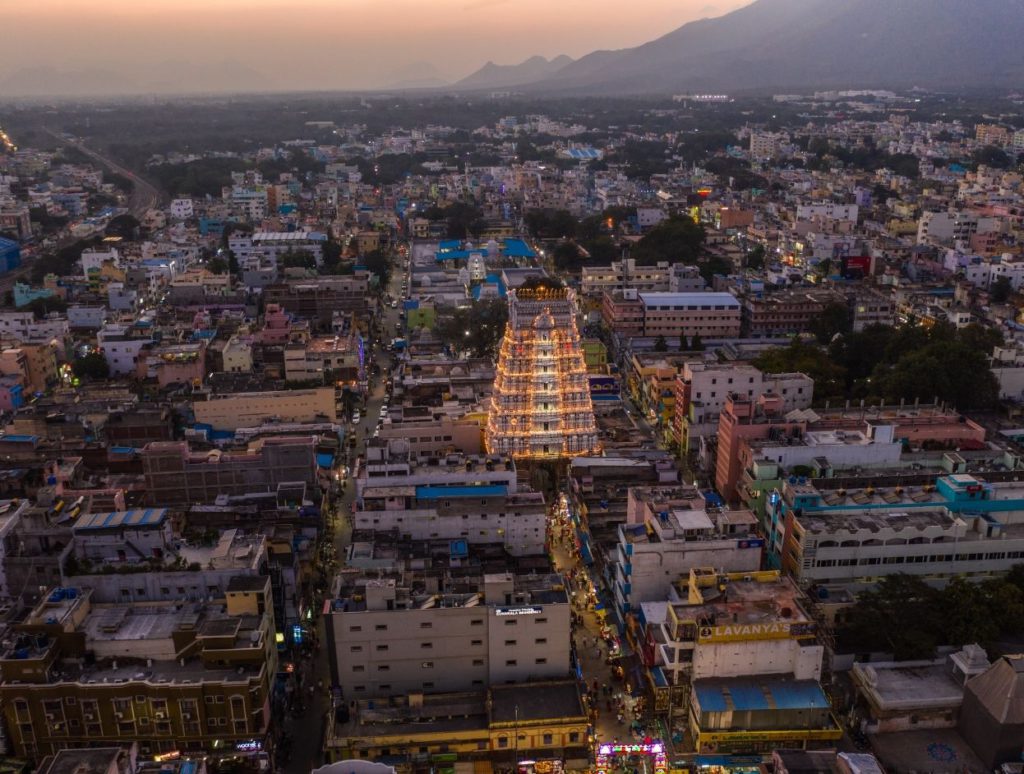
2. Padmavati Temple, Tiruchanur
This is another important temple in the town. Also known as Alimelu Manga Temple, the temple is dedicated to Padmavati, Lord Venkateshwara’s wife, and marks your visit complete. It is located in Tiruchanur just 5 km from Tirupati Railway station in the opposite direction to Tirupati Balaji.
According to the legends, after Bhrigu put his feet on Lord Vishnu’s chest. Instead of chastising him, he was apologetic and began rubbing his feet. Goddess Laxmi who resided in his chest felt betrayed. She came down to earth and immersed herself for 12 years in Pushkarini at the banks of Swarnamukhi River. She arose on the 13th year inside a golden lotus reincarnated as Padmavati (a fact that I find conflicting in the story).
However, if you can make a stop here. The temple is open from 7:00 am – 6:00 pm on all days of the week. It closes for an hour in the afternoon. Timings on Friday differ from to9:00 am to 6:00 pm. Entry is free (₹20 for quick and ₹100 for VIP darshan).
3. Kapila Teertham
Kapila Teertham is another famous pilgrimage in Tirupati located at the foothills of Tirumala near Alpagiri. The temple is home to a Shiva Lingam that locals believe has self-manifested itself. According to the legend, Sage Kapila meditated here to please Lord Shiva. His devotion came to fruition when both Lord Shiva and Goddess Parvati presented themselves. A large stone statue of Nandi (Shiva’s devotee) sits at the entrance.
A waterfall inside the temple premises is a sacred entity and falls directly to Temple Pushkarini. Like most other similar reservoirs, people believe that the holy waters wash away your sins and have the power to purify one’s soul.
4. Sri Kalahasti Temple
The magnificence of the Srikalahasteeswara Temple dates back to the 10th century. It is carved out of a single stone hill. The temple got its name from the words ‘Sri’ meaning a spider, ‘Kala’ meaning a serpent, and Hasti translating to an elephant. By legend, these creatures worshipped Lord Shiva to attain salvation at this place.
Like many other temples in the area, the initial structure was constructed by the Pallava kings five centuries before the final one. It was during the time of the Vijayanagar Empire that it took its final shape.
Sri Kalahasti is one of the Pancha Bhootha Sthalams of Lord Shiva. It represents Vayu Sthalam or the Element of Air. The main sanctum has a lamp that lights up day and night without the presence of wind indicating the presence of Lord Vayu (Wind). The temple is also associated with Rahu and Ketu. People believe that a visit will provide relief to those with a detrimental position of planet Rahu in their horoscopes.
The temple is 41 km from Tirupati city center in the town of Srikalahasti.
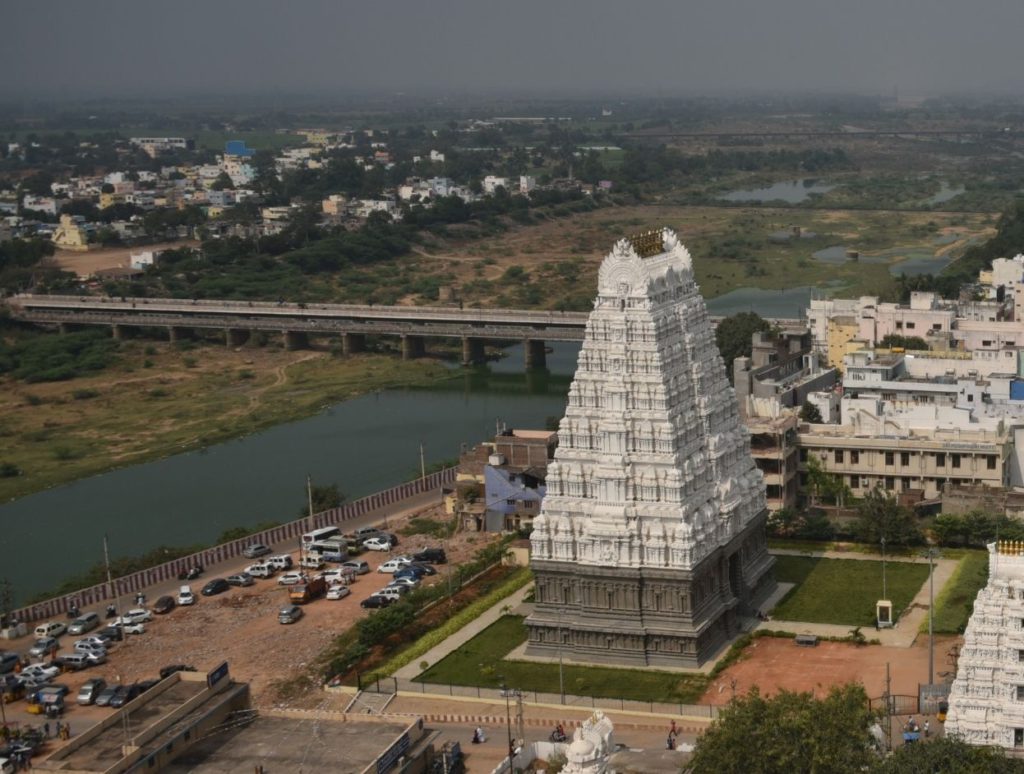
5. Ruins of Chandragiri
The town of Chandragiri was built by Yadav Rayas in the 11th century. In due course of time, it also served as the 4th capital of the Vijaynagara Empire (the largest in Deccan India). While most part of the heritage town is in ruins now, some places are still intact. A small lake in the town also offers boating facilities to tourists.
The Chandragiri fort along with the Raja and Rani Mahal is the center of tourist activity. There are several small shrines inside the fort. You can still see the medieval use of fortifications to protect from invaders. The Raja Mahal has been converted into an archaeological museum. Contrary to its name, the records retrieved from the basement of Rani Mahal suggest that it was the commander’s quarters instead of the Palace of the Queen.
The ruins are 13 km from Tirupati city center and are open from 9:00 am – 5:30 pm. The fort is closed on Friday. You will need to buy a ticket of around ₹30 to enter.
Interested in History? Also check out our guide on the ruins of Vijayanagara Empire in Hampi and Badami.
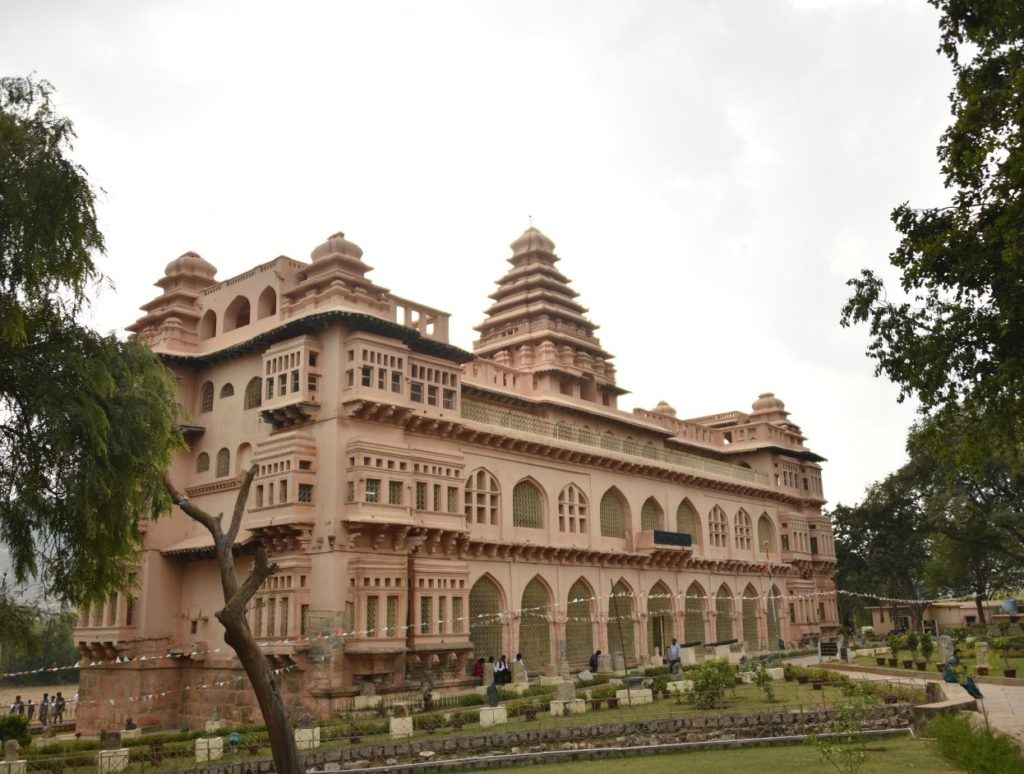
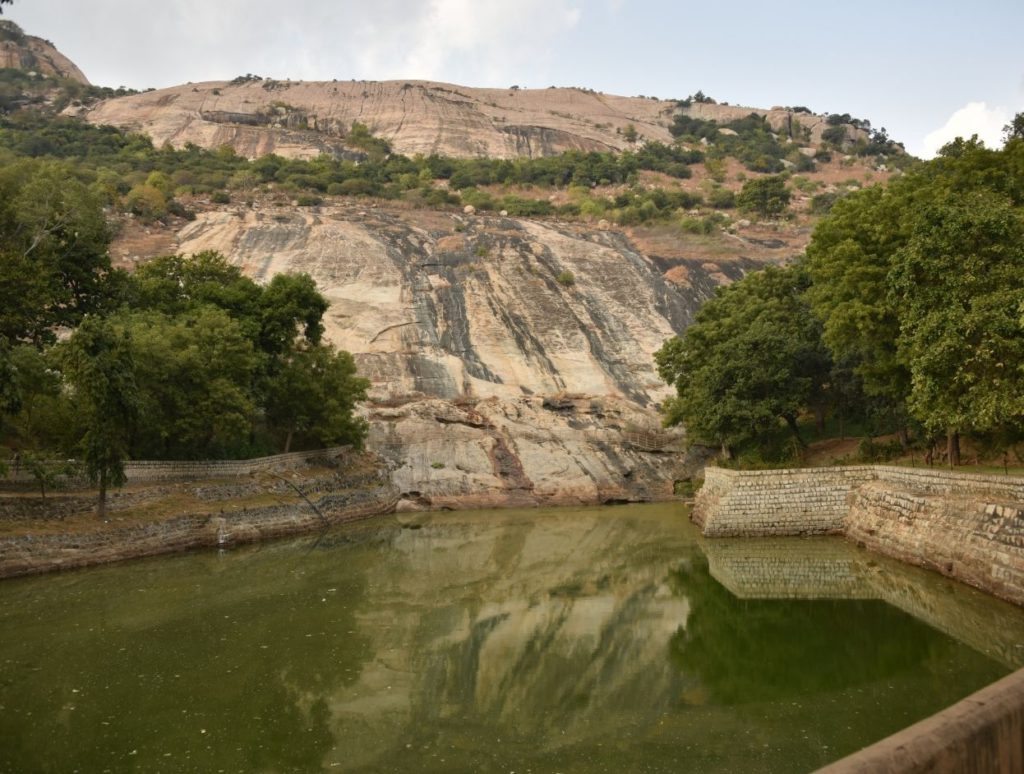
6. Sri Venkateshwara National Park
A little outside Tirupati is a notable-sized biosphere reserve. I think it will be a great change after a series of temple visits. The total area of the part is 353 sq km. And you can see a dense forest cover with small hills as far as the eye can see.
The National park is home to several local animals. There are leopard, jackal, fox, civet, sloth bear, sambhar, several species of deer, and a lot more inside the sactuary. On most days you can book a safari and take a natural tour of the reserve. There is also an adjacent zoo housing many of these animals and birds. But I am not an advocate of zoos. I will also request my readers to not encourage and fund such practices.
You can also add Talakona waterfall to your itinerary, one of the highest in the region. The trekking routes around the waterfalls are especially beautiful.
Timings are from 9.00 am to 5.00 pm every day of the week. It extends both ways a bit during the summers. The ticket price is ₹50/10 for Adults/Children. Safari charges are an additional ₹50/30 for Adults/Children. You need to pay ₹500 for a four-wheeler. Cycles for ₹25 are also available for rent.
Best time to travel to Tirupati
The best time to visit Tirupati is during the winter months of September to February. The temperature hovers in the twenties (Celcius) and humidity remain low. You can expect erratic showers on a few days. But the weather remains clear on most days for sightseeing and darshan.
The temple has an air of festivities during the popular Hindu festivals of Dussehra and Diwali. September sees an increase in the crowd with the onset of Brahmotsavam, an important festival of Tirupati. Unless you want to witness the festivities, avoid this time if you mind the crowd.
Teppotsavam is another spectacular festival in Tirupati. Also called the ‘float festival’ it is held at the Krishna temple during Chaitra (March). The celebrations go on for five days with a series of ceremonies and processions.
Avoid the summer months (March-August) since it can be hot, humid, and extremely uncomfortable. Heatwaves are also common.
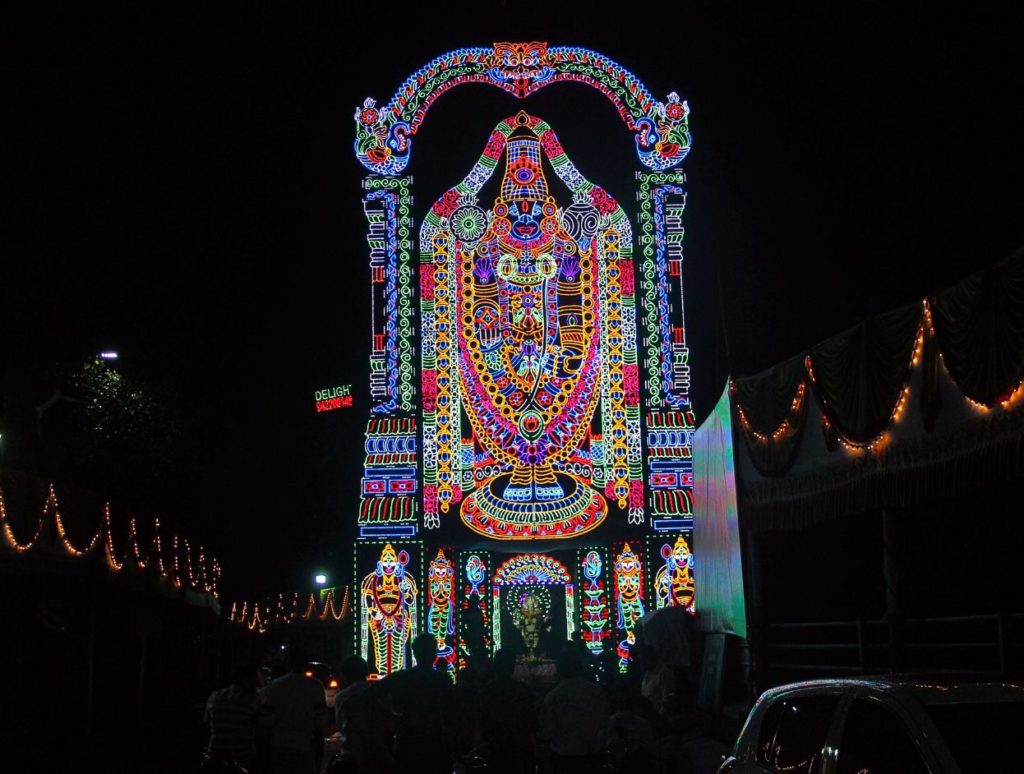
Save On Pinterest






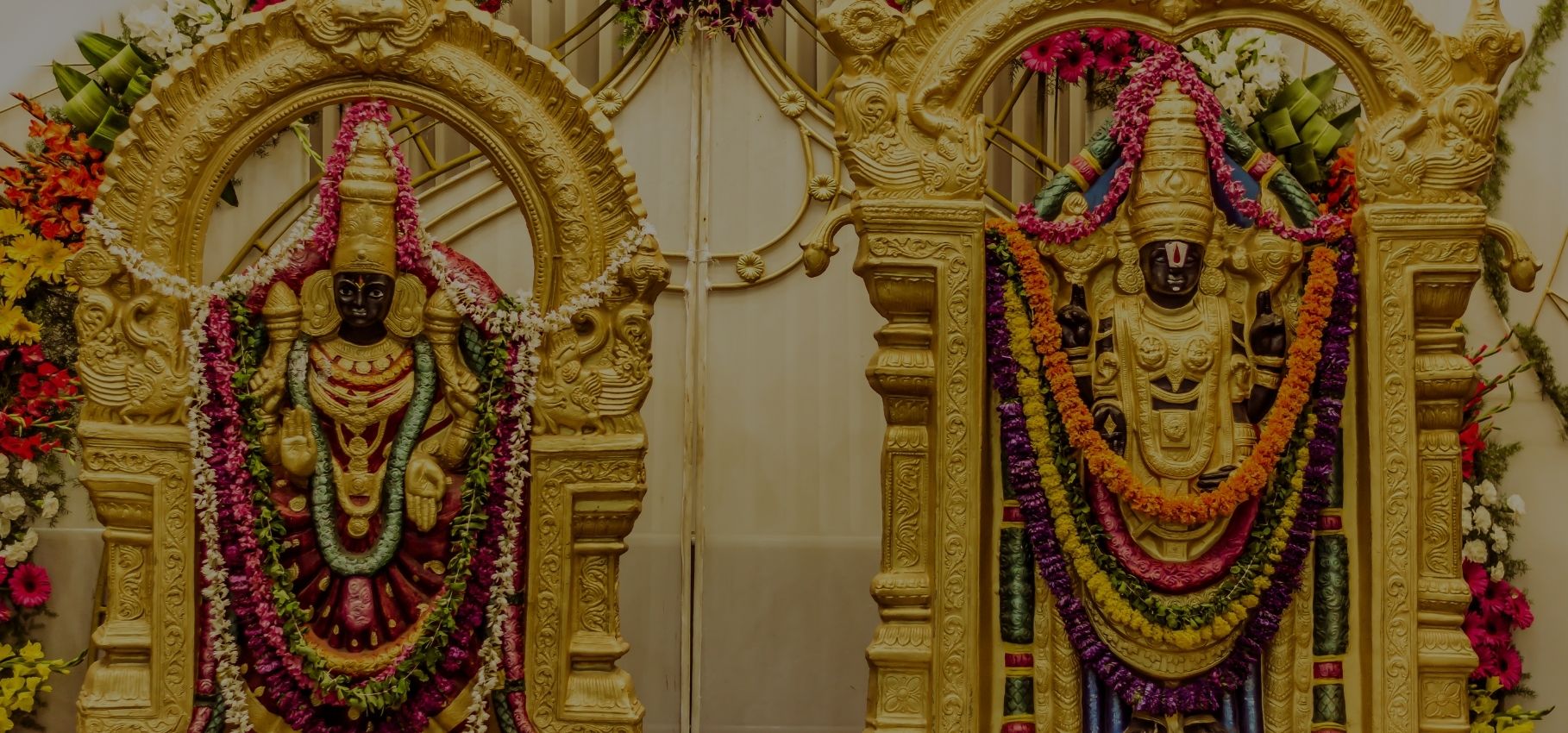
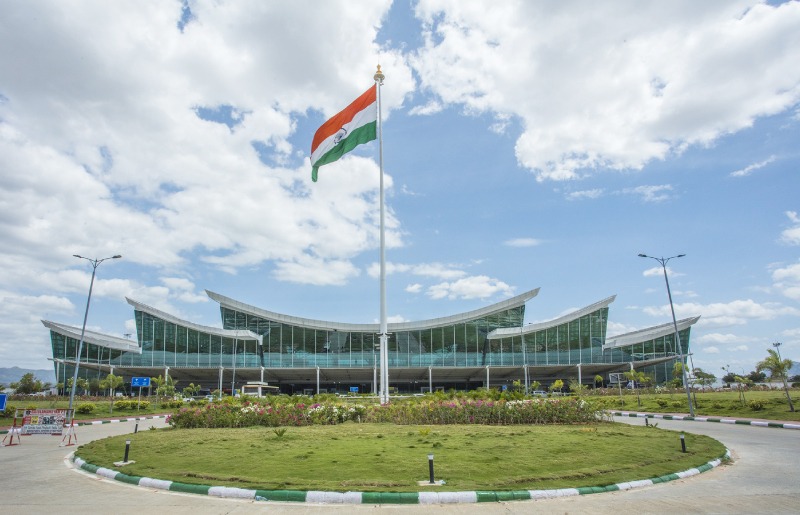
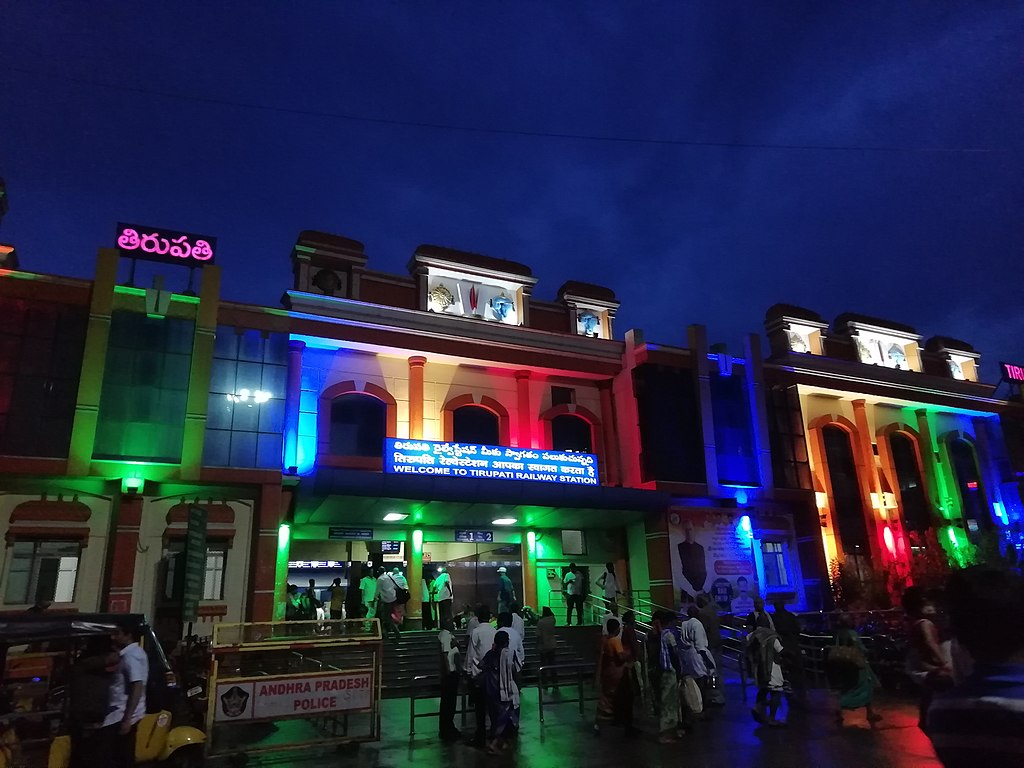
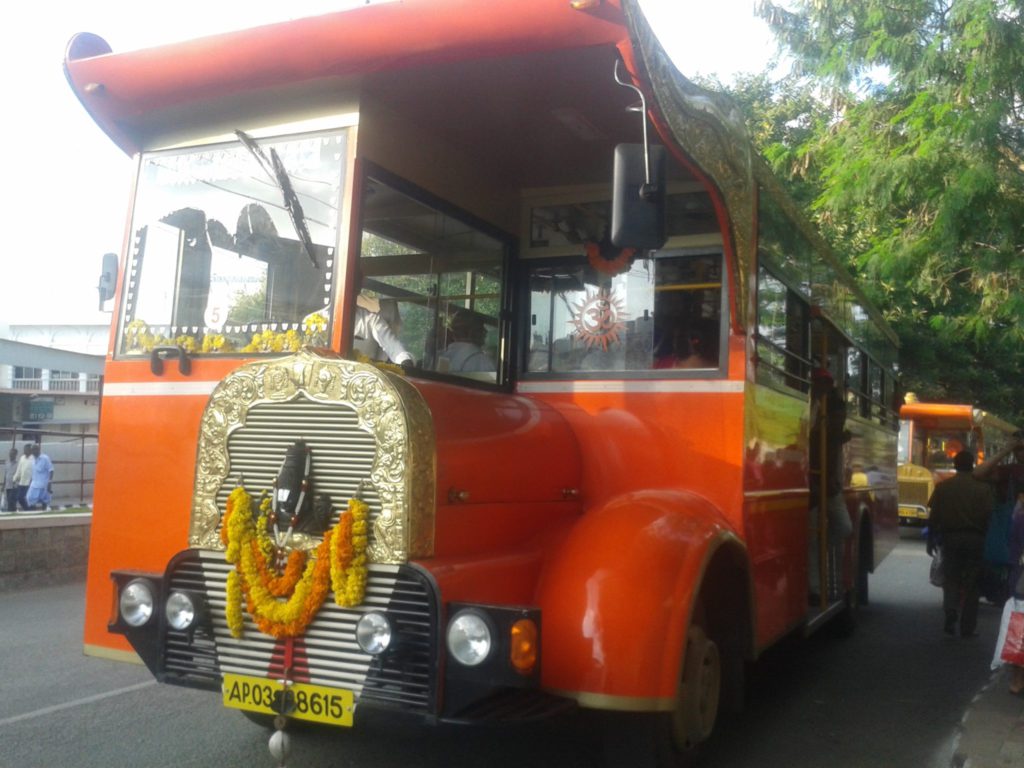
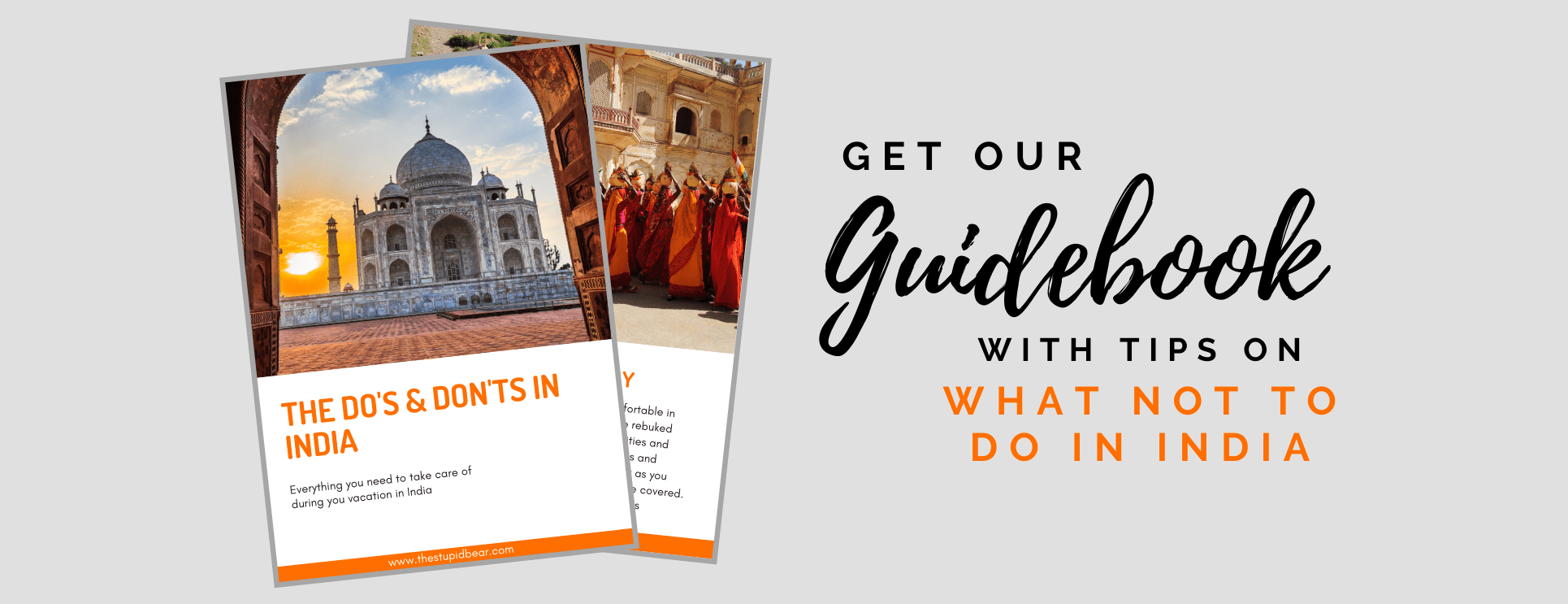
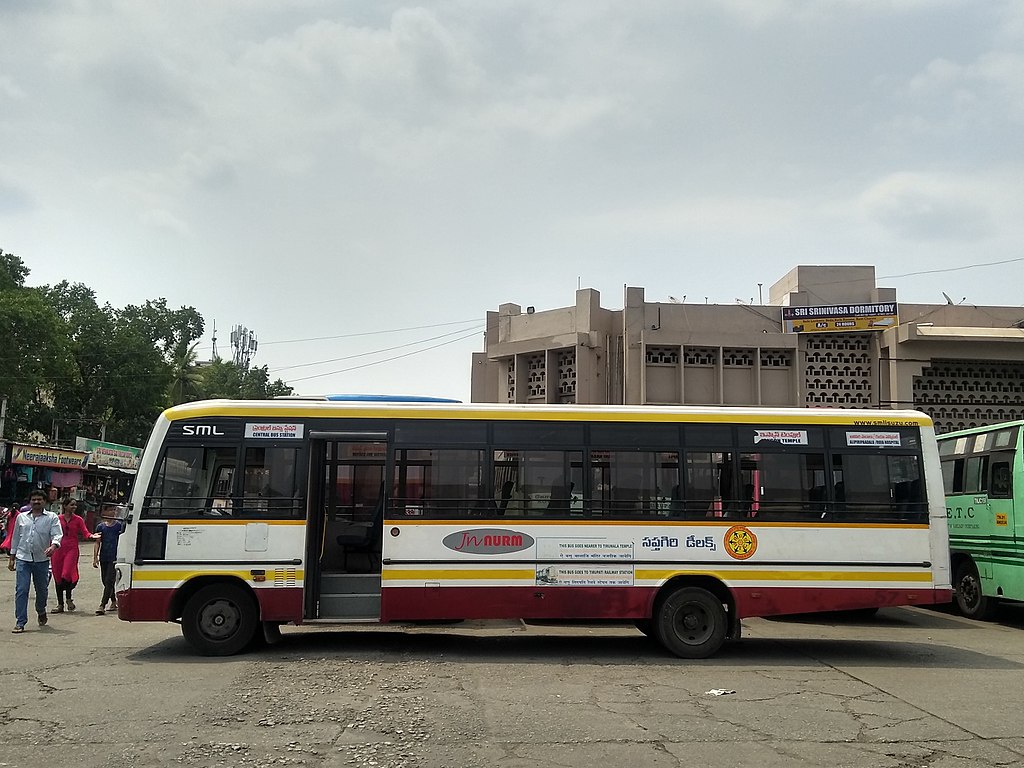

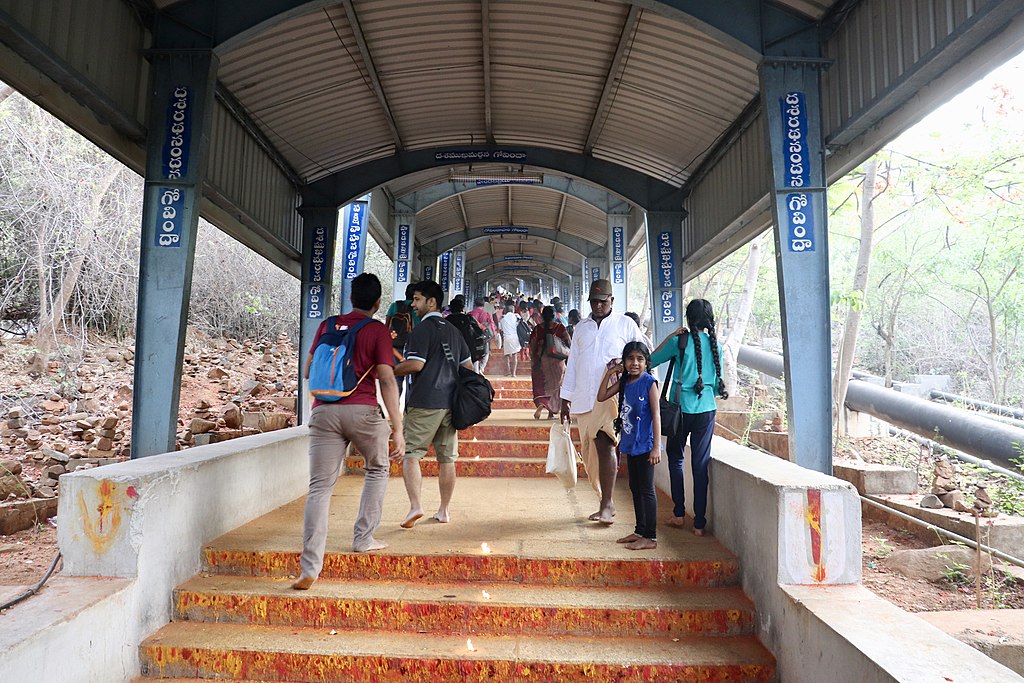
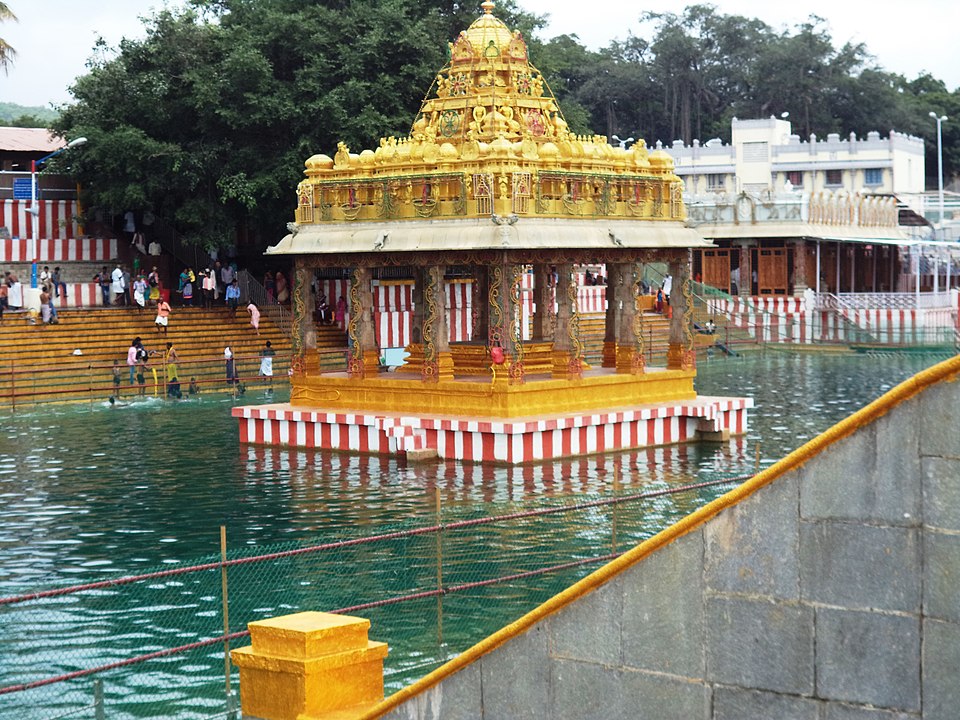
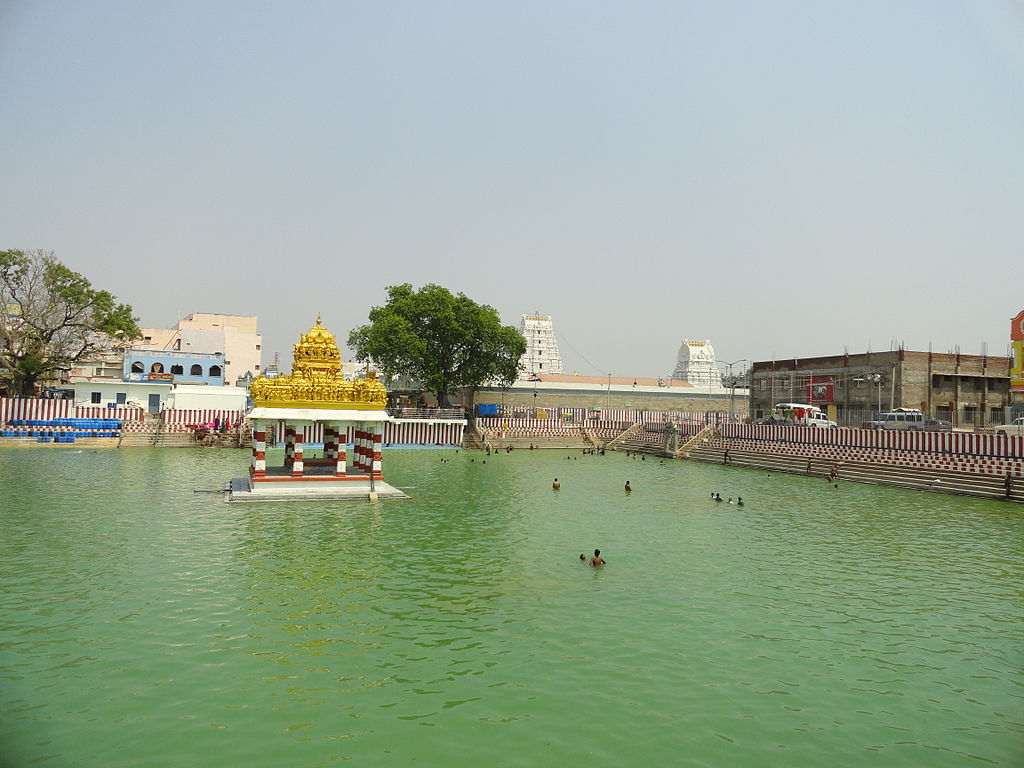
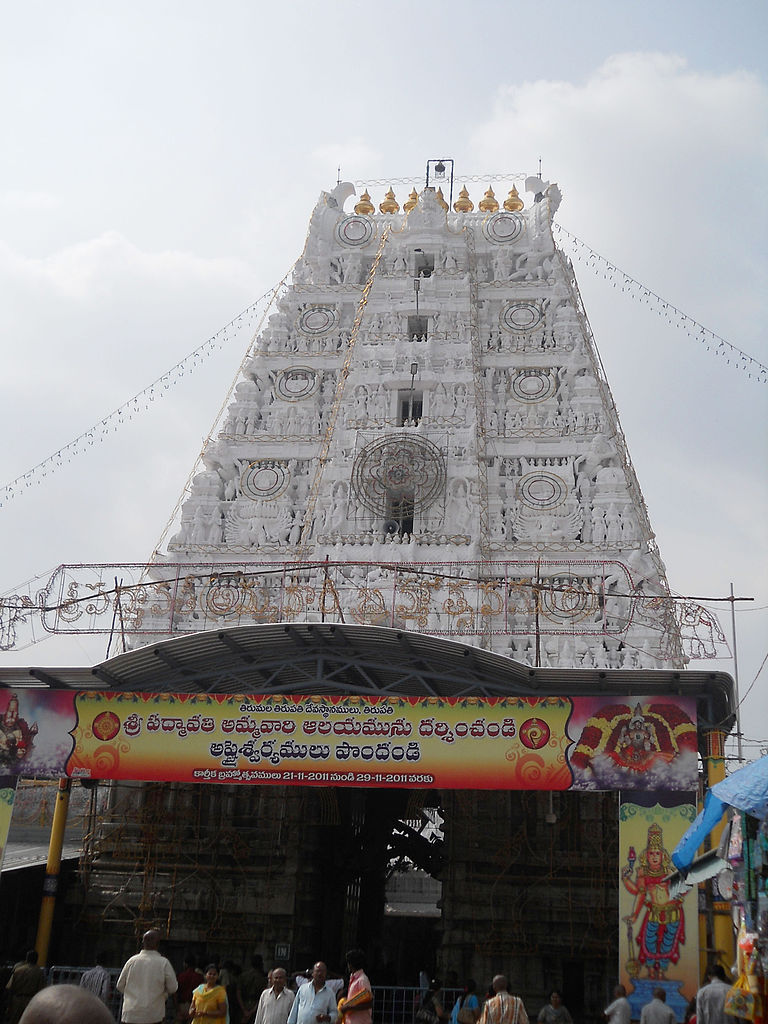
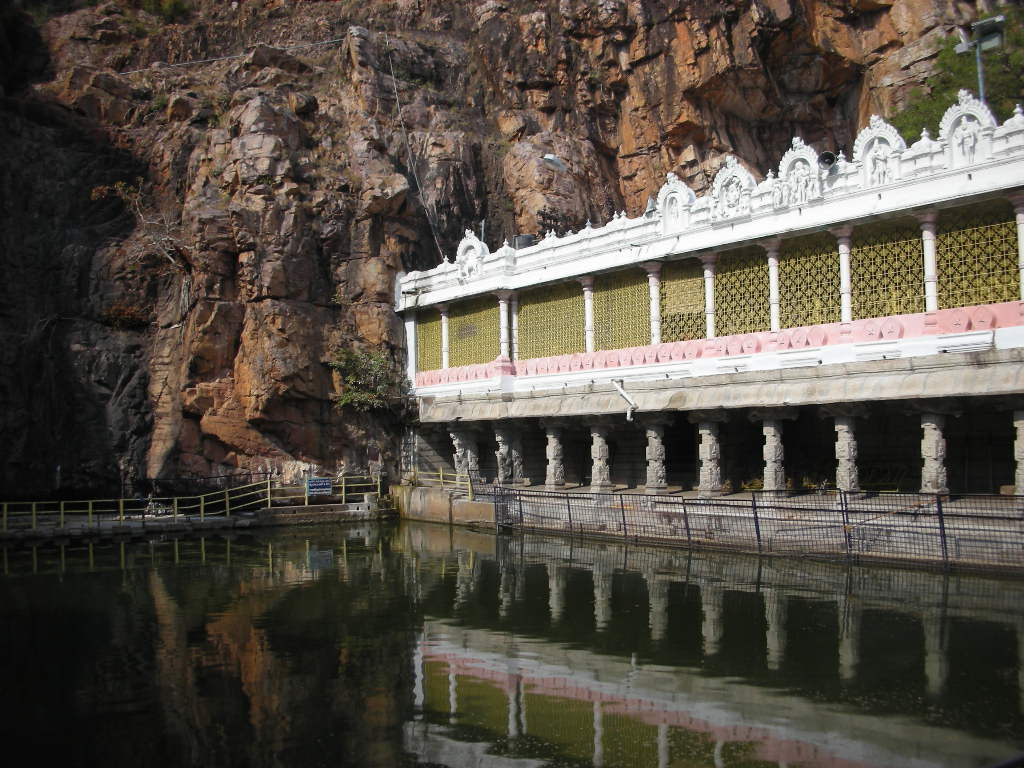
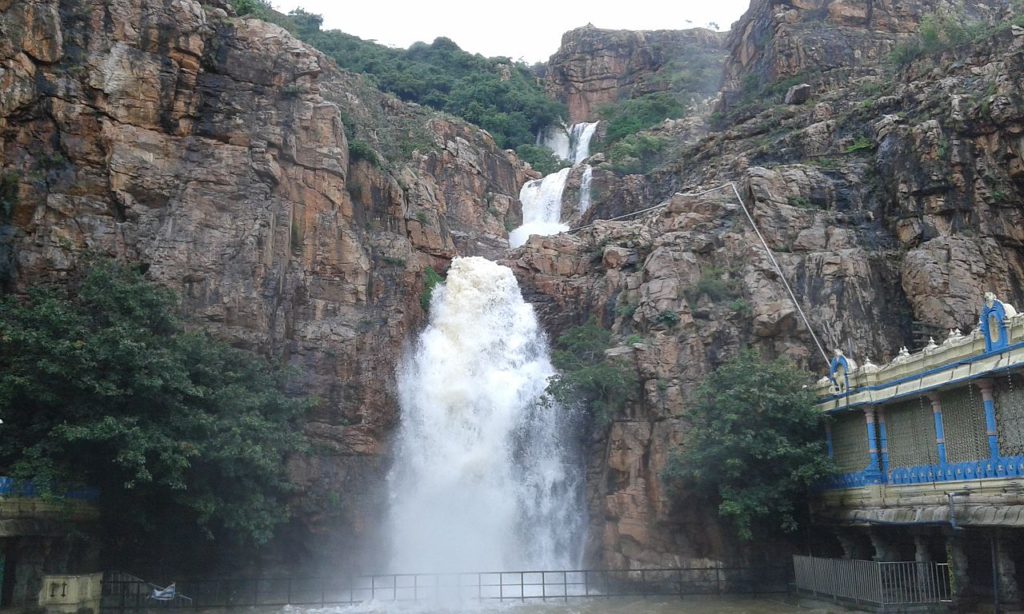
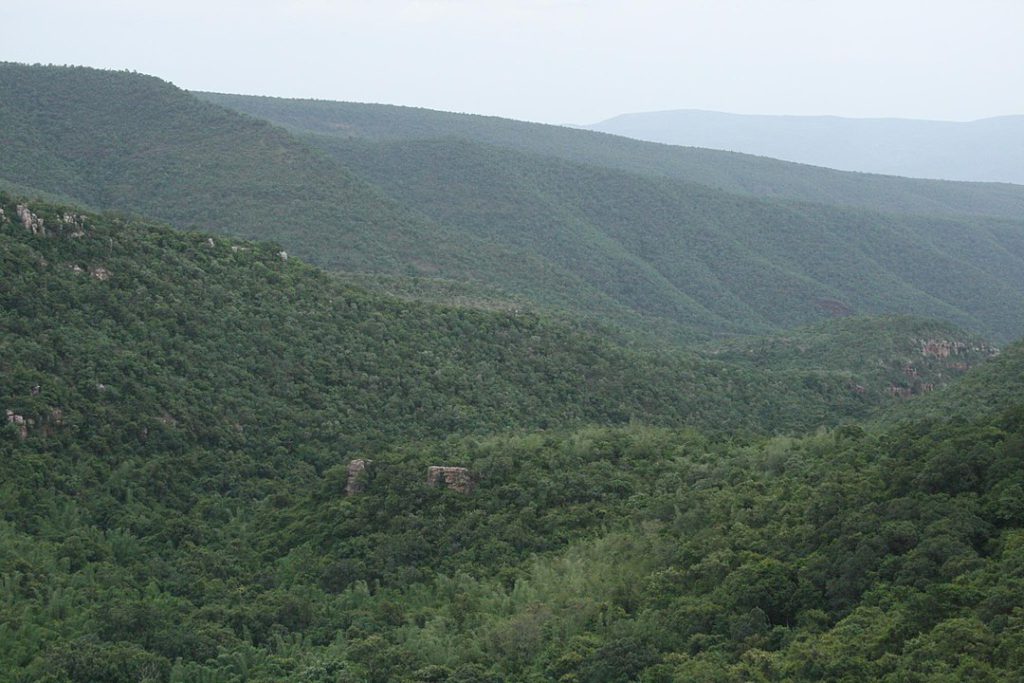
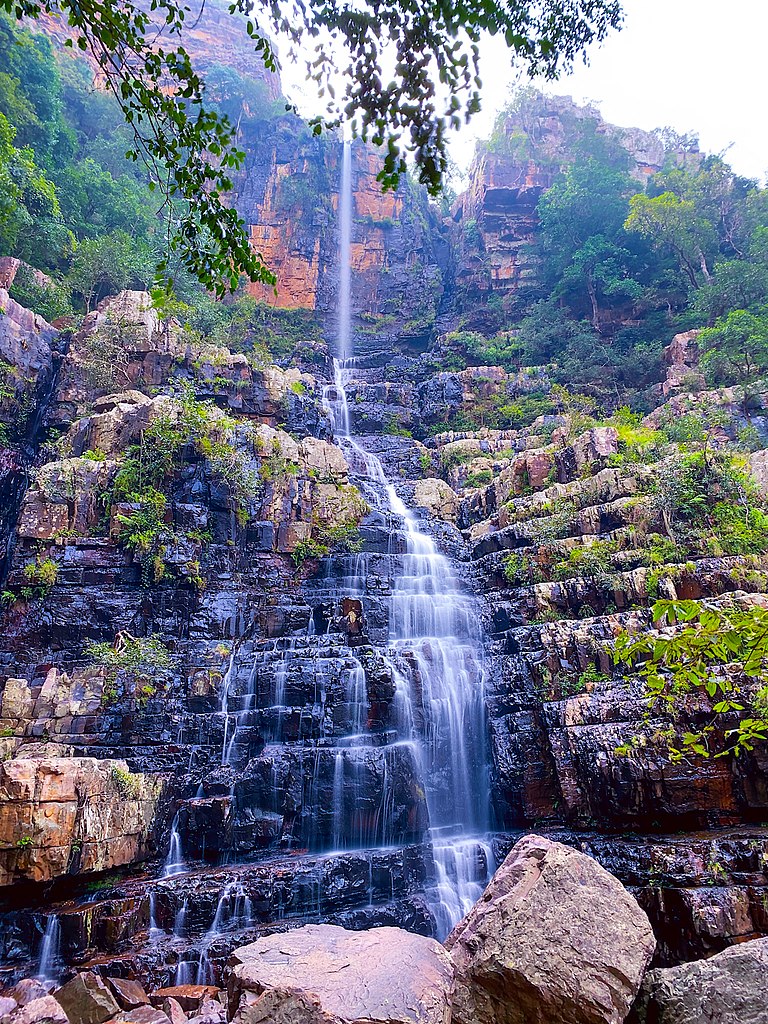
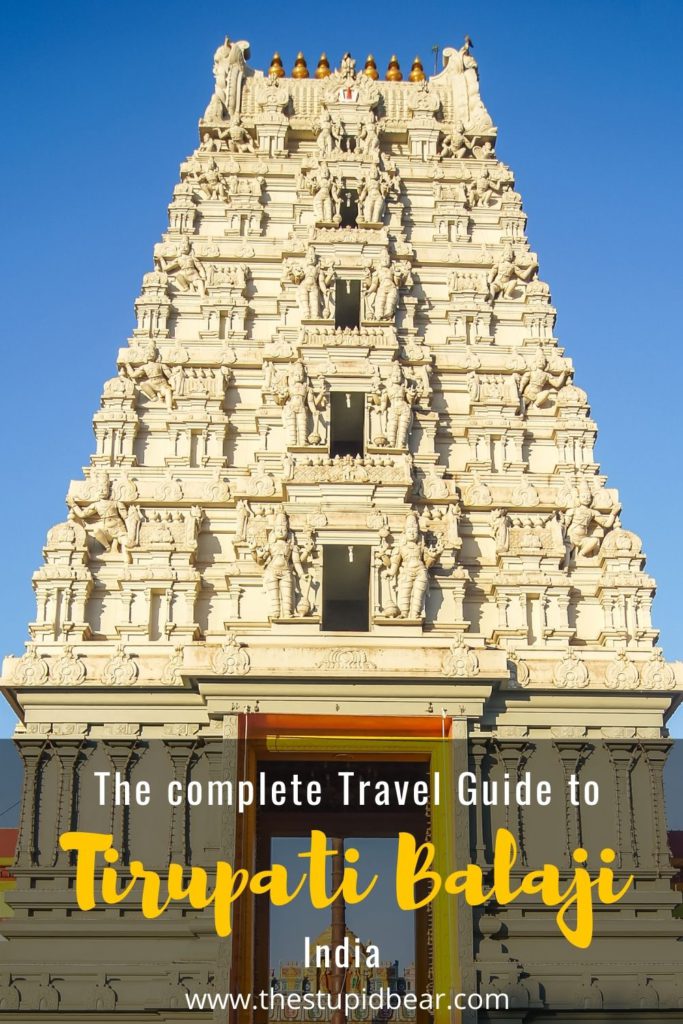

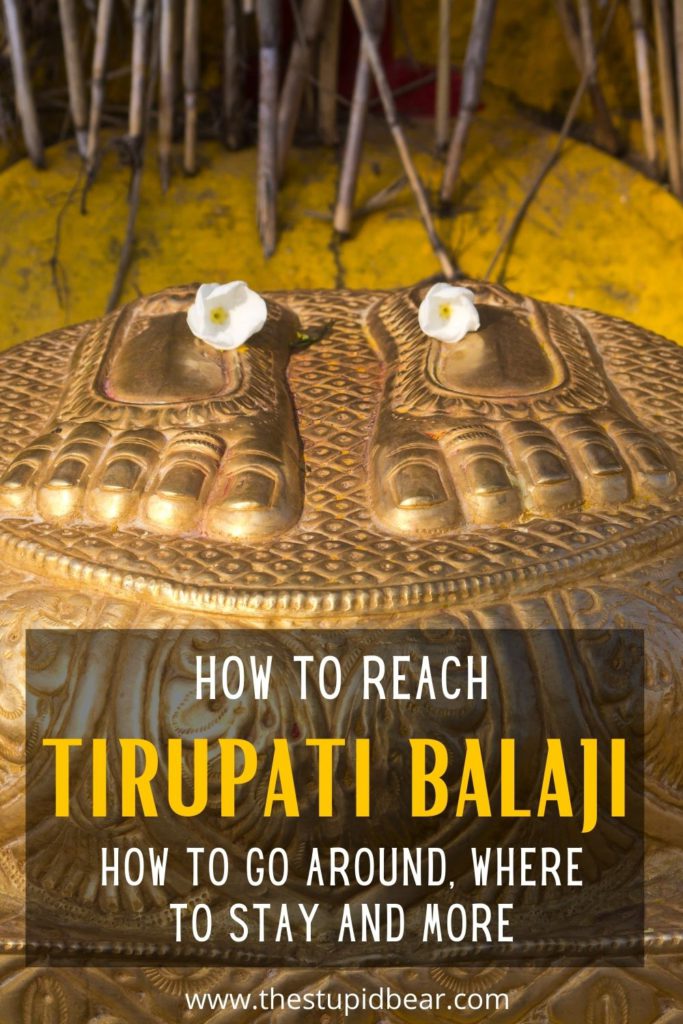
No Comments